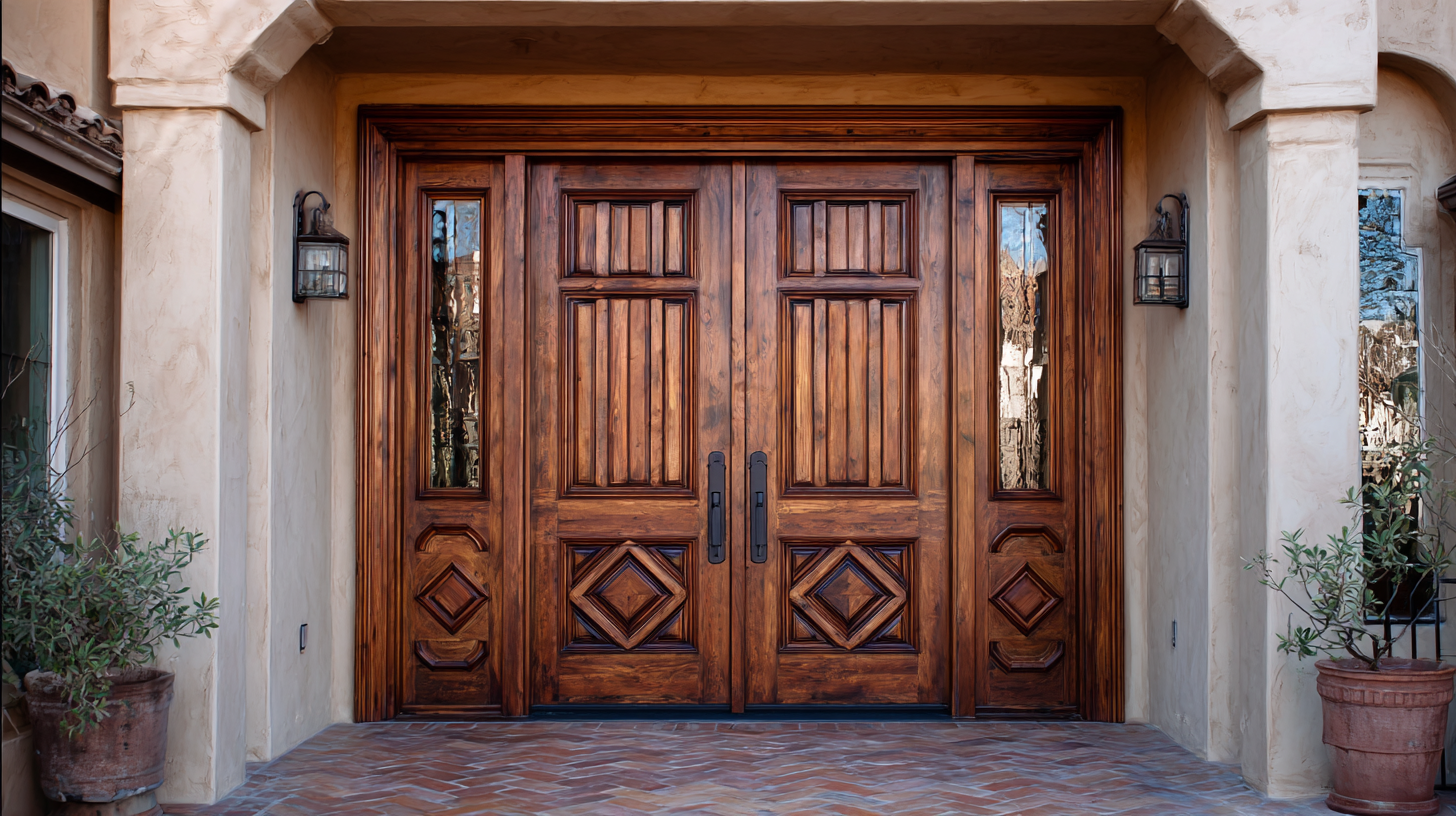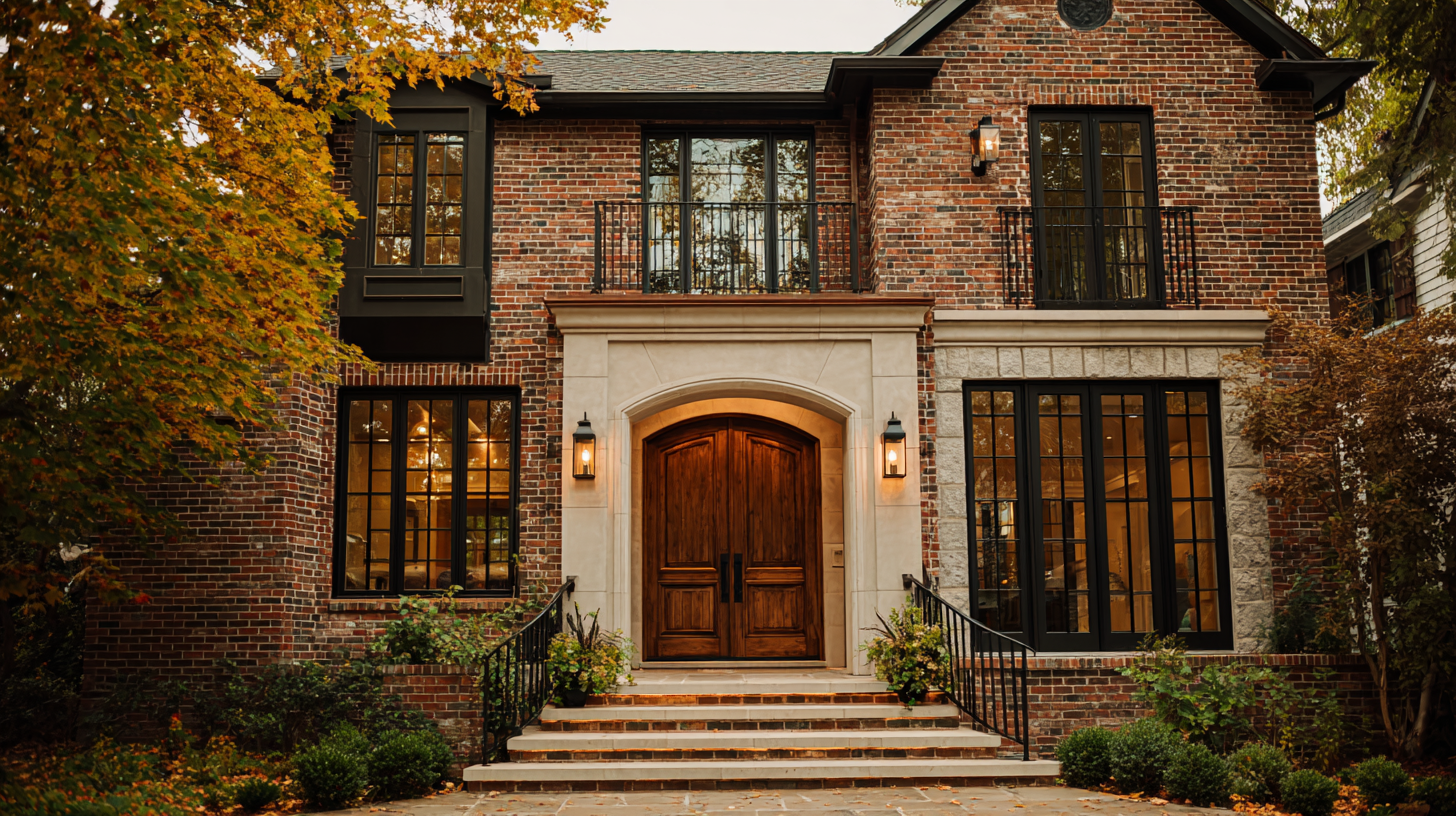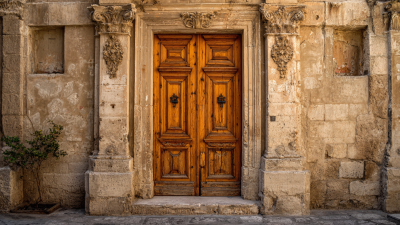Blog
Exploring the Ultimate Guide to Choosing Eco-Friendly Entry Doors for Your Home
In recent years, the demand for eco-friendly entry doors has surged as homeowners become increasingly aware of their environmental impact. According to the American Institute of Architects, sustainable building practices can increase property value by up to 20%, reflecting the growing consumer preference for green alternatives.
 Entry doors, as pivotal components of a home’s exterior, not only contribute to its aesthetic appeal but also play a crucial role in energy efficiency. The U.S. Department of Energy estimates that upgrading to energy-efficient doors can save homeowners an average of $150 to $200 annually on energy bills. Selecting the right eco-friendly entry door can enhance a home’s insulation and reduce carbon footprints, demonstrating a commitment to sustainability without sacrificing style or security.
This guide delves into the vital considerations and benefits of choosing eco-friendly entry doors, empowering homeowners to make informed decisions that benefit both their residences and the planet.
Entry doors, as pivotal components of a home’s exterior, not only contribute to its aesthetic appeal but also play a crucial role in energy efficiency. The U.S. Department of Energy estimates that upgrading to energy-efficient doors can save homeowners an average of $150 to $200 annually on energy bills. Selecting the right eco-friendly entry door can enhance a home’s insulation and reduce carbon footprints, demonstrating a commitment to sustainability without sacrificing style or security.
This guide delves into the vital considerations and benefits of choosing eco-friendly entry doors, empowering homeowners to make informed decisions that benefit both their residences and the planet.
Understanding the Environmental Impact of Traditional Entry Doors
Traditional entry doors can have a significant environmental impact, primarily due to the materials used in their construction and the production processes involved. Many standard doors are made from non-renewable resources such as synthetic composites and treated woods, which can contribute to deforestation and habitat loss. The manufacturing of these materials often results in high carbon emissions, further exacerbating climate change. Additionally, these doors may not be designed for energy efficiency, leading to increased energy consumption for heating and cooling, which places additional strain on environmental resources.
In contrast, eco-friendly entry doors offer a sustainable alternative that minimizes ecological footprints. These doors are typically constructed from renewable materials such as reclaimed wood, bamboo, or recycled metal, drastically reducing the demand for new raw materials. Furthermore, many eco-friendly doors are designed with insulation properties that enhance energy efficiency, helping homeowners reduce heating and cooling costs. By opting for eco-friendly entry doors, individuals can contribute to a more sustainable future while ensuring their homes remain stylish and functional.

Evaluating Sustainable Materials for Eco-Friendly Entry Doors
When selecting eco-friendly entry doors for your home, evaluating sustainable materials is crucial. Options such as reclaimed wood, bamboo, and composite materials often stand out for their minimal environmental impact. Reclaimed wood not only reduces the demand for new timber but also adds character and history to your entryway. Bamboo, known for its rapid growth, serves as a highly renewable resource, making it an excellent choice for those looking to enhance sustainability without sacrificing aesthetics.
Another important aspect to consider is the insulation properties of the materials you choose. Doors made from sustainably harvested wood or high-quality composites can provide superior thermal efficiency, lowering energy costs and reducing the carbon footprint of your home. Additionally, look for manufacturers that prioritize eco-friendly production processes, ensuring that your choice of entry door does not contribute to pollution or environmental degradation. By carefully evaluating these sustainable materials, you can enhance both the style and efficiency of your home while making a responsible choice for the planet.
Energy Efficiency Ratings: Choosing Doors that Save You Money
When selecting eco-friendly entry doors for your home, energy efficiency ratings play a crucial role in making an informed decision. These ratings reflect how well a door can resist heat transfer, ultimately impacting your home’s energy consumption. Doors with a high energy efficiency rating can help reduce heating and cooling costs, offering significant savings over time. To determine the efficiency of a door, consider looking for its U-factor and R-value; a lower U-factor indicates better insulating properties, while a higher R-value means the door is more effective at resisting temperature changes.
Additionally, it’s essential to evaluate the materials used in the door’s construction. Options like fiberglass and insulated steel provide superior energy efficiency compared to traditional wood, as they typically offer enhanced thermal performance. Furthermore, many eco-friendly doors are designed with weather stripping and energy-efficient glazing, further improving their insulation capabilities. By prioritizing energy efficiency ratings and material choices, you can select a door that not only complements your home’s aesthetic but also contributes to longer-term energy savings and reduced environmental impact.
Energy Efficiency Ratings of Eco-Friendly Entry Doors
This chart illustrates the Energy Efficiency Ratings (U-Factor) of various eco-friendly entry door materials. A lower U-Factor indicates better insulating properties, leading to greater energy savings for your home.
The Benefits of Locally Sourced Entry Doors for Sustainability
When selecting eco-friendly entry doors for your home, considering locally sourced materials offers substantial benefits for sustainability. According to a report by the Forest Stewardship Council (FSC), using locally sourced wood can reduce carbon footprints by up to 30% compared to using materials transported over long distances. This reduction is attributed to lower transportation emissions and supporting local economies. By choosing doors made from wood supplies in your area, homeowners contribute to reducing reliance on non-renewable resources and promote responsible forestry management.
Furthermore, the benefits extend beyond just carbon emissions. A study by the Sustainable Resources Institute indicates that locally sourced materials often come from sustainably managed forests, which enhances biodiversity and protects ecosystems. In addition to environmental advantages, opting for locally made entry doors can foster community resilience, creating jobs and stimulating the local economy. Homeowners not only enhance their living space aesthetically but also align their choices with broader ecological and social goals, making them proactive participants in sustainability efforts.
Exploring Certifications: What Makes an Entry Door Eco-Friendly?
When considering eco-friendly entry doors, understanding certifications is crucial. Various organizations provide certifications that help consumers identify products that meet environmental standards. For instance, the Forest Stewardship Council (FSC) certification ensures that the wood used is sourced from responsibly managed forests, prioritizing sustainability and reducing deforestation. Additionally, products carrying the Energy Star label indicate superior energy efficiency, which can significantly contribute to a home's overall energy performance and lower utility bills.
Moreover, look for doors that feature low VOC (volatile organic compounds) finishes, which minimize harmful emissions and improve indoor air quality. Certifications like Green Seal or Greenguard provide assurance that the materials used in the door's finish or construction are safe for both the environment and the occupants' health. By focusing on these certifications, homeowners can make informed decisions that align with their eco-friendly goals, ensuring their entry doors contribute positively to both their living space and the planet.

Related Posts
-

Ultimate Checklist for Choosing the Perfect Exterior Doors for Your Home
-

Exploring Innovative Alternatives in Windows and Doors: A Global Procurement Perspective on Sustainability and Efficiency
-

5 Essential Tips for Choosing the Best Patio Windows for Your Home
-

Revolutionizing Spaces: Real-Life Applications of the Best Windows and Siding in Sustainable Construction
-

How to Identify Top Suppliers for the Best Sliding Patio Doors: A Global Buyers' Guide
-

Ultimate Guide to Choosing the Best Commercial Windows and Doors for Your Business
About Us
We serve the Greater Milwaukee area: Waukesha, Milwaukee, Washington, Ozaukee Counties and nearby areas, including Germantown, Menomonee Falls, Mequon, Cedarburg, Thiensville, Grafton, Jackson, West Bend, Hartland, Waukesha, Brookfield, West Allis, Franklin, Greenfield and more. We are Wisconsin’s Best Contractor for Replacement Windows, Doors, Siding & Roofing!
Contact Details
Address:
N112 W14880 Mequon Road
Germantown, Wisconsin 53022
Phone:
Email:
Showroom Hours
Monday: 9am – 5pm
Tuesday: 9am – 5pm
Wednesday: 9am – 5pm
Thursday: 9am – 5pm
Friday: 9am – 4:30 pm
Saturday by Appointment
Evenings by Appointment



